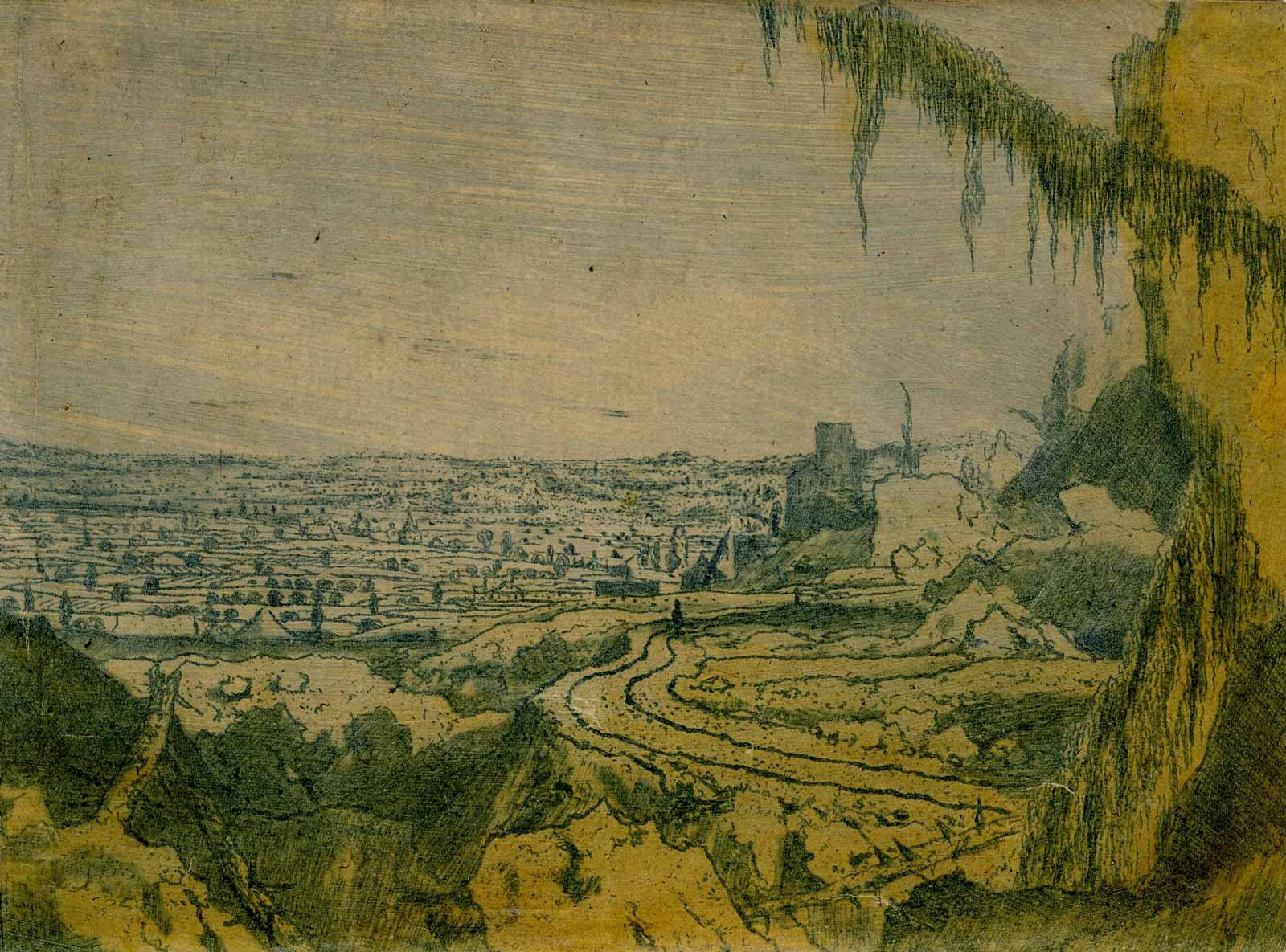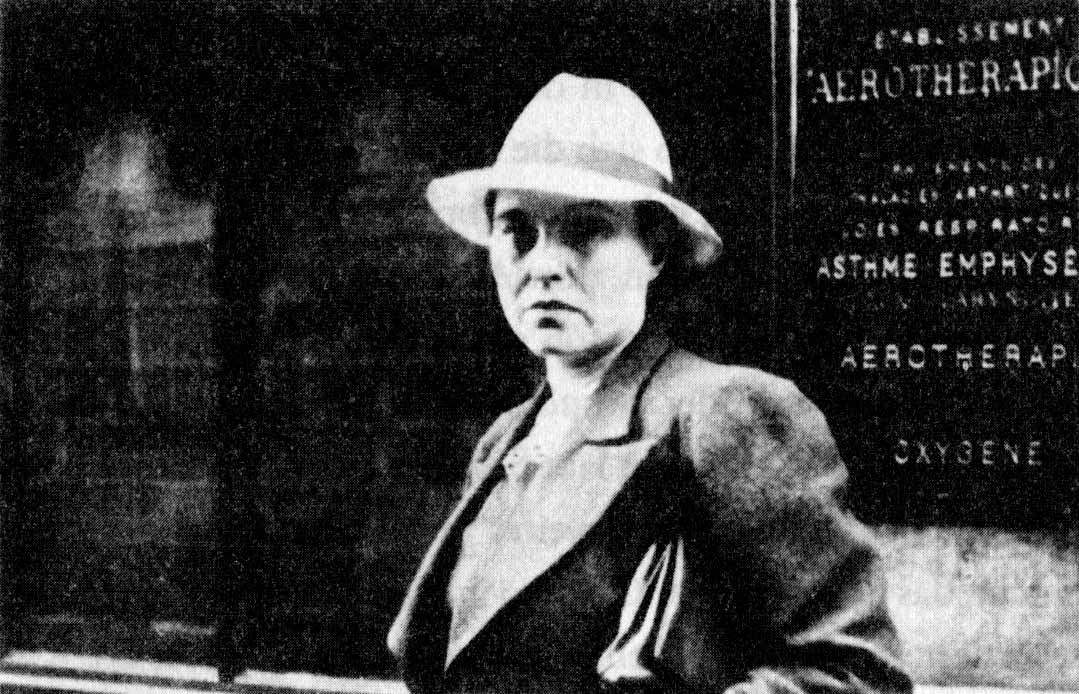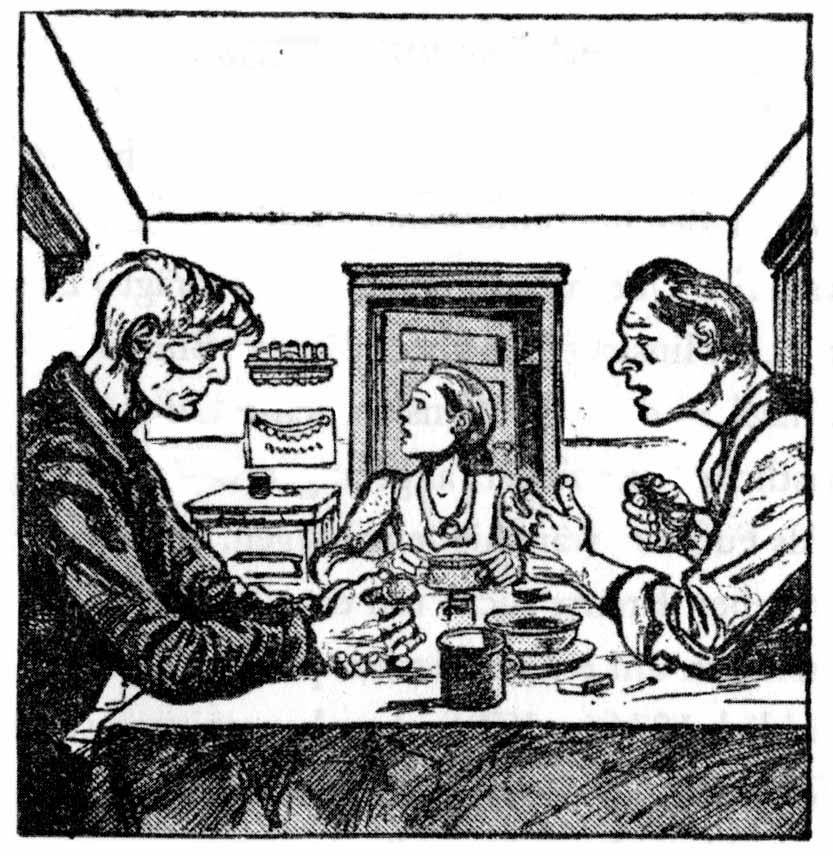My first encounter with Anna Seghers’s novel Das siebte Kreuz (The Seventh Cross) was brief and painful. At some point in the mid-1990s—I must have been in tenth or eleventh grade—our German teacher announced that in the months to come we would be reading excerpts from an antiwar novel written in the days of the Third Reich. The announcement was greeted by the students with incredulity and protest. What? Such a big fat book! On top of that, the antiquated language and a plot that refused to get under way, quite aside from the fact that no one could keep track of all the characters.
I have a vague recollection that the story began with a description of the Rhine landscape I found hard to follow, and that the main character was constantly on the run. There was a feeling of general relief among the students when we were finally able to put the book aside. In all honesty and to my shame, I should add that I don’t have a single pleasant memory of any of the other books I read in school, from Goethe’s Faust to Günter Grass’s The Tin Drum to Paul Auster’s Moon Palace.
For almost a quarter of a century, that was my only acquaintance with Anna Seghers—until I recently looked up something in an entirely different context and got snagged on a still from a movie. It showed Spencer Tracy in a Hollywood film called The Seventh Cross. I was amazed: that unreadable old tome had been made into a movie! And with a star actor? My curiosity aroused, I read The Seventh Cross for a second time, and I devoured it in two days. After that, I understood why it was an international bestseller.
It had been a hit almost immediately after it was published in 1942—simultaneously in German by a publisher in exile in Mexico and in an English translation in the United States. Within six months, it had sold 421,000 copies in the US. To date, it has been translated into more than thirty languages. Then, in 1944, the Austria-born director Fred Zinnemann, who would make the western classic High Noon a few years later, filmed The Seventh Cross for Metro-Goldwyn-Mayer. Besides Tracy, the cast included Jessica Tandy, Hume Cronyn, and Helene Weigel (in her only film role during her American exile).
After the war, the novel was published to acclaim in Seghers’s native Germany. In 1947, in Darmstadt, Seghers was awarded the most important prize for German-language literature, the Georg Büchner Prize. The same year, she returned to Germany, moved to West Berlin, and joined the Communist party, the newly formed SED, in the zone occupied by the Soviets. She later moved to East Berlin and remained a citizen of the GDR until her death in 1983. In 1961, when Seghers, who had by then become the president of the Writers’ League of the GDR, did not condemn the building of the Berlin Wall, Günter Grass wrote her a letter appealing to her conscience, emphasizing the extraordinary position she held for him as well as his colleagues in the Federal Republic (West Germany): “It was you who taught my generation and anyone who had an ear to listen after that not-to-be-forgotten war to distinguish right from wrong. Your book, The Seventh Cross shaped me; it sharpened my vision, and allowed me to recognize the Globkes and Schröders under any guise, whether they’re called humanists, Christians, or activists.”
Later, after the Willy Brandt era, when West Germans had reconciled themselves to the existence of the GDR, The Seventh Cross assumed the position in the West that it had long held in the East: it became a book assigned in the schools. Indeed, the novel was rediscovered by the members of the ’68 generation who were protesting their parents’ deep silence about the Third Reich. And the novel continues to be listed in school curricula. It seems to have accomplished the leap into the twenty-first century.
*
Anna Seghers was born Netty Reiling, in Mainz in 1900, the only child of an upper-class Jewish family. Her father was a dealer in art and antiquities. Seghers always felt close ties to her native city. Decades later, at the age of seventy-five, she wrote in a telegram to the citizens of Mainz, “In the city where I spent my childhood, I received what Goethe called the original impression a person absorbs of a part of reality, whether it is a river, a forest, the stars, or the people.”
She published her first story in 1924, using the pen name Seghers. She married Laszlo Radvanyi, and the couple had two children, Peter (Pierre) and Ruth. Radvanyi was a Marxist, and Seghers herself became increasingly involved in the German Communist Party (KPD); around the same time, on playwright and novelist Hans Henny Jahnn’s recommendation, she was awarded the prestigious Kleist Prize for literature. A promising future seemed to lie ahead.
Advertisement
Then, in 1933, as in a stage drama, came the moment of peripeteia, a sudden, total reversal. In the year Hitler came to power Seghers, doubly endangered as both a Jew and a Communist, fled with her family to Switzerland. It was the beginning of a long odyssey. She lived in Paris—separated from her husband, who had been interned in a French concentration camp—until France was occupied by the Nazis in 1940. Alone with their two children, she managed first to organize his release and then orchestrate the family’s escape by ship via New York to Mexico City, where she would stay until 1947.
It was in Mexico that she learned of her mother’s fate: murdered in 1942 in the Lublin concentration camp in Poland. The message from the Jewish congregation of Mainz was matter-of-fact: “Mrs. Hedwig Reiling arrived in Piaski near Lublin in the month of March, 1942, and died there.”
Between May of 1938 and late in the summer of 1939, with world war imminent and in precarious circumstances, Anna Seghers wrote “a little novel,” as she called it at first, or as an early working title reads, the “7 Crosses Novel.”
According to her telling, there were originally just four copies of the manuscript, all of which she mailed off in hopes of being published. The first copy was destroyed during an air raid; a friend lost another while fleeing the Nazis; the third fell into the hands of the Gestapo; only the fourth copy, addressed to her German publisher in the United States, arrived at its destination. However, she herself hadn’t kept a copy of her manuscript because the danger of its being found in her apartment by a police raid—a constant fear of hers, even in neutral Mexico—was too great.
The Boston publishing house Little, Brown accepted the novel for publication, but at first, Seghers, at that time the sole support of her family, saw no money from it. The modest author’s advance was withheld in order to pay for the translation. In 1942, the publisher F.C. Weiskopf, by then a friend, wrote her a letter with the happy news that her novel had been selected by the Book of the Month Club: “Be glad, my people, Manna has rained down from heaven.” But it wasn’t until the following year that Seghers started receiving a monthly royalty payment of $500. The breakthrough came with the Hollywood filming. Seghers was paid the fabulous sum of $75,000 in four installments, the last in 1946. This, at least, brought to an end the time of financial distress.
*
The Seventh Cross is an example of something rare in the literature of the German language: a brilliantly written novel that keeps alive one of the most important chapters of German history—though I can still see why as a student I thought the book was old-fashioned. The grammar is complex, the language at times curious, its female characters oddly passive. So what gives The Seventh Cross its literary quality?
First, something quite simple: Anna Seghers, it turns out, was a veritable master of suspense. It’s obvious why Hollywood grabbed this book—not just for the popular prison-escape motif that makes for breathtaking action, but also because of the cliffhanging delays in the narrative sequence. The central plot, Heisler’s escape, is not told straight through; instead, it is constantly interrupted by jumps in the story to one of the more than thirty other characters in the novel. As for Heisler, he is what used to be called “a real man.” Rough and inscrutable, even ruthless, he is a man who left his wife and baby for another woman; even amid terror and horror, he is a womanizer who is even allowed, at the end, a flirtation with a waitress.
The book also takes a filmic approach to form. The transition from the last sentence of the prologue, “Where might he be by now?,” to the beginning of the first chapter and the description of Franz and his cheerful bicycle ride suggests a classic cross-fade. At the same time, The Seventh Cross is characterized throughout by very strong visual symbolism—as we see in the use of Christian iconography, beginning with the cross in the title. The motif of the seven crosses is not Seghers’s invention, but rather a particularly perfidious punishment that was actually meted out in 1936 at the Sachsenhausen concentration camp after an escape (fatally unsuccessful), an incident the author had no doubt heard of. Other Christian references include the allusion to the dragon slayer in the main character’s first name; the first night of his flight spent in the Mainz Cathedral; and, not least, the number seven, which turns up not only in the cross of the title, but also in the basic seven-chapter structure of the novel, covering a week, from Monday to Sunday. So, in a certain way, it is also a creation story, at the end of which, although not everything turns out all right, a few things do somehow work out, at least for the protagonist George Heisler.
Advertisement
Such Christian images catch the eye, though their use in the novel is largely unrelated to their original significance. The Mainz Cathedral may have been constructed from the “inexhaustible strength of the people,” but it is depicted, alongside descriptions of the “almost excessively proud” bishops and kings, as a “refuge in which one can freeze to death.” The seventh cross remains empty; George Heisler is no messiah, but rather an ordinary human being with all his weaknesses who won’t let himself be consoled with some abstract future; he is about the here and now. He intends to go to Spain to fight against the fascists.
In contrast to the writing of her advocate Hans Henny Jahnn or of Thomas Mann, Seghers’s sentences are artfully simple. Everything serves to create clarity, and describe action, such as Belloni’s flight across the rooftops. The vivid descriptions of nature lead me to surmise that the young Netty Reiling intentionally chose the name of an artist as her pen name—that of the Dutch painter Hercules Segers (1590–1638), who was known above all for his realistic landscapes and who, to some degree, influenced Rembrandt. Moreover, Seghers’s 1924 doctoral dissertation was titled “Jude und Judentum im Werke Rembrandts” (“The Jew and Jewishness in the Work of Rembrandt”). There, too, she was interested in the depiction of unadulterated reality, for, after all, it was the unassimilated Eastern Jews in all their poverty who served as Rembrandt’s models rather than members of the “brilliant Sephardic congregation,” the official Jewish community. Rembrandt was much more concerned with “rendering real Jewish individuals from his knowledge of their essential nature and their appearance.”
Similarly, Seghers worked “from reality,” and with an effect that was admired by her colleagues. But how was it possible for her, living in exile, to present such an intense and accurate picture of contemporary Germany? For one thing, there was the previously mentioned “original impression,” that Seghers absorbed in her childhood of the landscape in the environs of Mainz. For another, she did careful, thorough research. Seghers spoke with fellow refugees and read the voluminous KPD-inspired Braunbuch über Reichstagsbrand und Hitlerterror (Brown Book About the Reichstag Fire and the Hitler Terror) and a report by the Munich Communist Party delegate Hans Beimler dealing with his imprisonment in the Dachau concentration camp, from which he escaped to fight, like George Heisler, in the Spanish Civil War, in which he was killed in 1936.
But another ingredient is added to this feast of detailed description and the everyday ordinary, culminating in the character of Ernst the shepherd who stands on his hill literally above everything. It is something that points to a metaphysical (not to be confused with religious) dimension behind the novel’s tangibly concrete aspect. It is the voice of the omniscient narrator. It is the invisible and omnipresent intellect hovering over and around the characters and seeing to it that what happens does not remain futile and meaningless, even at moments of the greatest brutality. The voice knows about the “eiserner Bestand,” the “emergency reserves” that people find within themselves, or as it says in the remarkable concluding statement of the nameless collective voice: “We all felt how profoundly and how terribly outside forces can reach into a human being, to his innermost self. But we also sensed that in that innermost core there was something that was unassailable and inviolable.”
It may be that, in the aftermath of 1945, when the totality of the horrors of National Socialist rule became known, horrors that no doubt exceeded even Anna Seghers’s powers of imagination at the time, such a passage sounds almost too benign. Yet it is precisely these authorial passages that touched me most deeply on rereading the book. Today, the gruesome acts of the camp commandant would be presented more graphically; the details of Heisler’s flirtation at the end would probably be stretched out; above all, though, a modern author would strike an ironic note, perhaps a cynical one, since now after two world wars we know what a hopeless case our species is. But considering that Anna Seghers, in a moment of extreme existential danger, created, in spite of it all, this literary credo to humanism, this beacon that inspires us, in an ambiguous, crepuscular world full of inhuman barbarity, with the courage never to give up, to retain our humanity no matter what the cost—for that we should and must be grateful.
Adapted from the afterword to Anna Seghers’s The Seventh Cross, translated by Margot Bettauer Dembo, which is published by New York Review Books.




